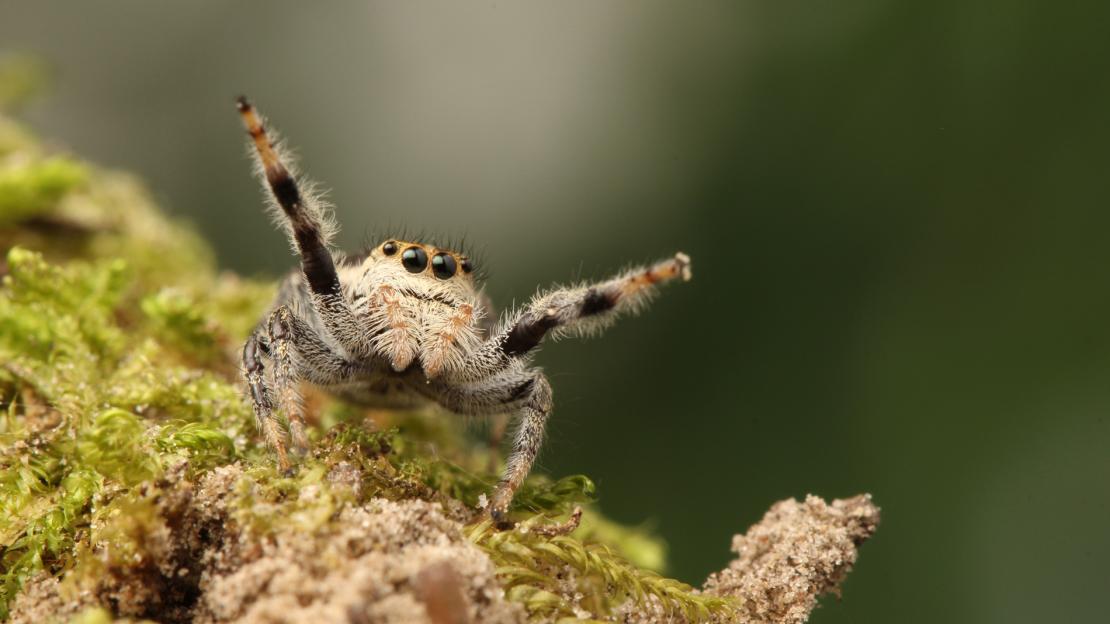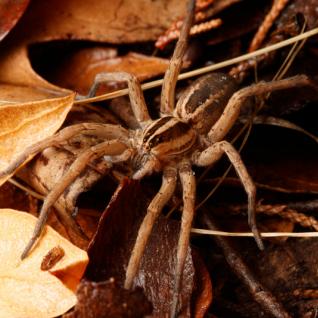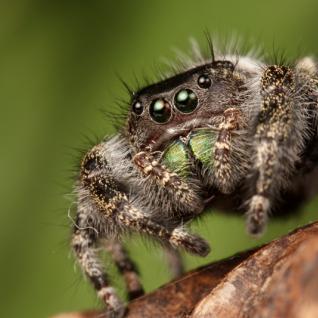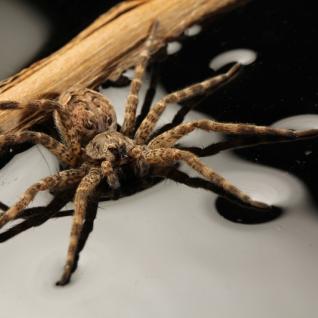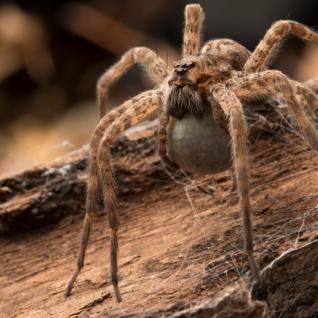Professor Maydianne Andrade had to start meeting students in the U of T Scarborough library, partly because some were too afraid of the many pictures of spiders in her office.
“Their biology, their anatomy, their behavior, everything is foreign to us,” says Andrade, a world-renowned expert on the mating habits of cannibalistic spiders.
“It’s different and it’s novel and it’s alien. And yet, they live on this planet and are integral parts of our ecology and food web.”
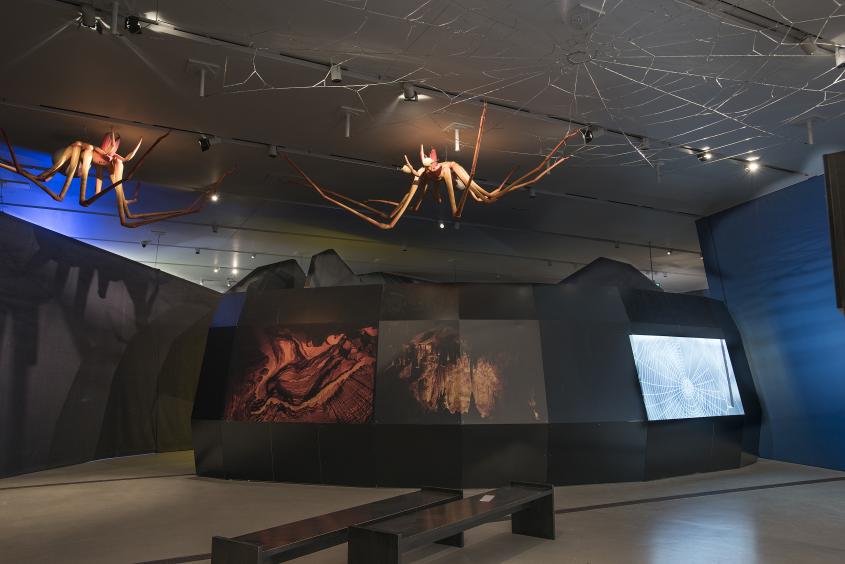
For her, this makes them captivating. Challenging fear of spiders, one of the most common phobias in
Western society, is a key goal of Spiders: Fear and Fascination, the new exhibit at the Royal Ontario Museum (ROM), on display until Jan. 6, 2019.
The exhibit travelled from the Australian Museum, where it is titled Spiders – Alive and Deadly (deadly is slang for “great” in Australia). One of the pivotal people in bringing the exhibit to Canada was Douglas Currie, an associate professor in the Department of Ecology & Evolutionary Biology at U of T and vice-president of the Department of Natural History at the ROM.
“A lot of people declared they would never visit the exhibit,” Currie says. “But with the way it’s laid out, people do feel sort of emboldened to come down and explore it, and come out better for it, I think.”
Andrade, who is also a research associate of the ROM, says fear of spiders is likely learned. From the time Andrade’s two kids were in kindergarten, she gave yearly outreach presentations with spiders in their classes. She saw a few children, usually only one or two, appear afraid in those early years. But this comfort is precarious, she says, as she suspects that “all it takes is for one or two adults to show an aversive response in the presence of a child for the child to develop this aversion as well.”
The exhibit, which features more than 400 live and preserved spiders, invites visitors to confront their misconceptions and fears.
Several components were added for the Canadian version of the display, many of which came from the ROM’s own collection. A dreamcatcher (which is modelled on spider webs) and a spider-themed Lakota saddlebag were added as examples of spider significance in Indigenous cultures. Visitors can also find an art piece on loan from the Art Gallery of Ontario depicting Anansi, an African folktale character that often appears as a spider.
As part of the exhibit, Andrade gave a talk on spider mating habits, with a focus on Black Widows. The talk was titled Through a Web Darkly, a nod to the 1961 film Through a Glass Darkly, in which a woman hallucinates that God is a spider living under her wallpaper. Andrade began her lecture by talking about spiders in popular culture. She says negative media representations likely play a role in learning to fear spiders.
For a contemporary element, and as a relatively rare example of positive representations, the exhibit includes the original Marvel comic books where Spider-Man, Spider-Woman and Black Widow first appeared.
“Spider-Man’s abilities are based on things spiders can actually do, and if you were to scale them up to Spider-Man size, I think they would do even more spectacular things than he does,” Andrade says.
Currie says his favourite parts of the exhibit are the 20 displays of live spiders, including the “Spider Lab,” where, twice per day, guests can watch as spiders and scorpions are milked for their venom, which is used for biomedical research. Visitors can then speak with the exhibit’s “Spider Wranglers.”
“That’s sort of an interactive element that you don’t often see, so is the fact that we have live specimens,” Currie says. “This is something that you normally find in a zoo, but not in a museum setting.”
Currie says, so far, the reception for the exhibit has been “great.” He says the exhibit is particularly enjoyable for families, including kids who may be receptive to developing a fear of spiders.
“A major part of the exhibit is not only to inform visitors about the diversity and biology of spiders, but dispel any misconceptions,” Currie says. “If we can fill that role and encourage people to come and challenge their fears, then we’ve done a very important part of our job.”
